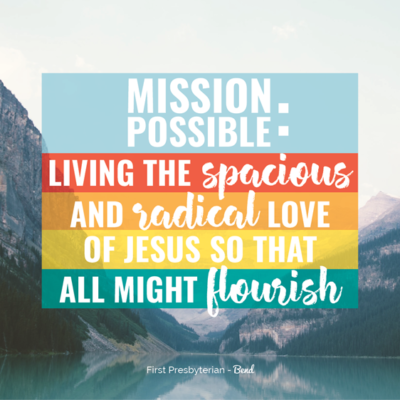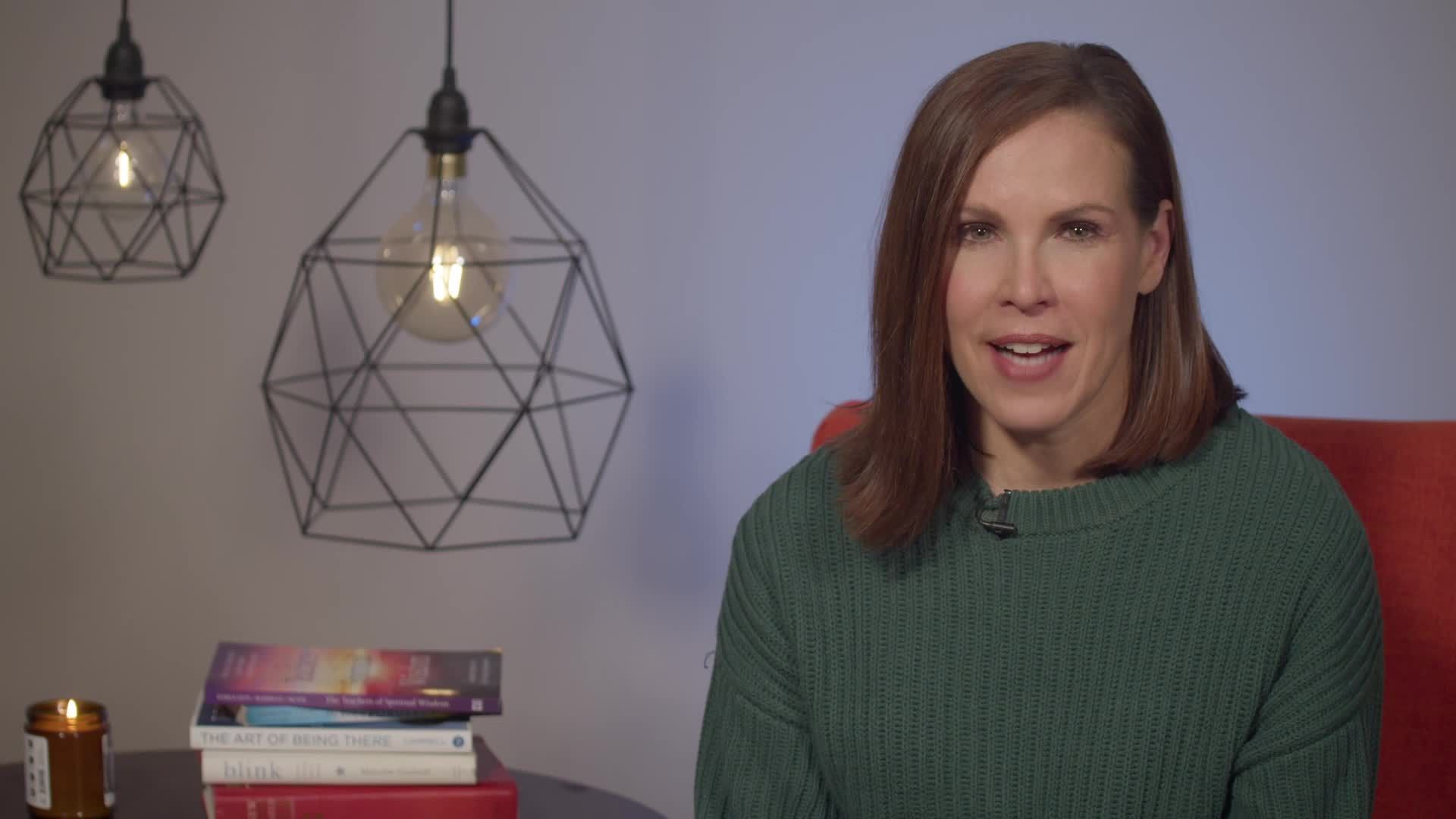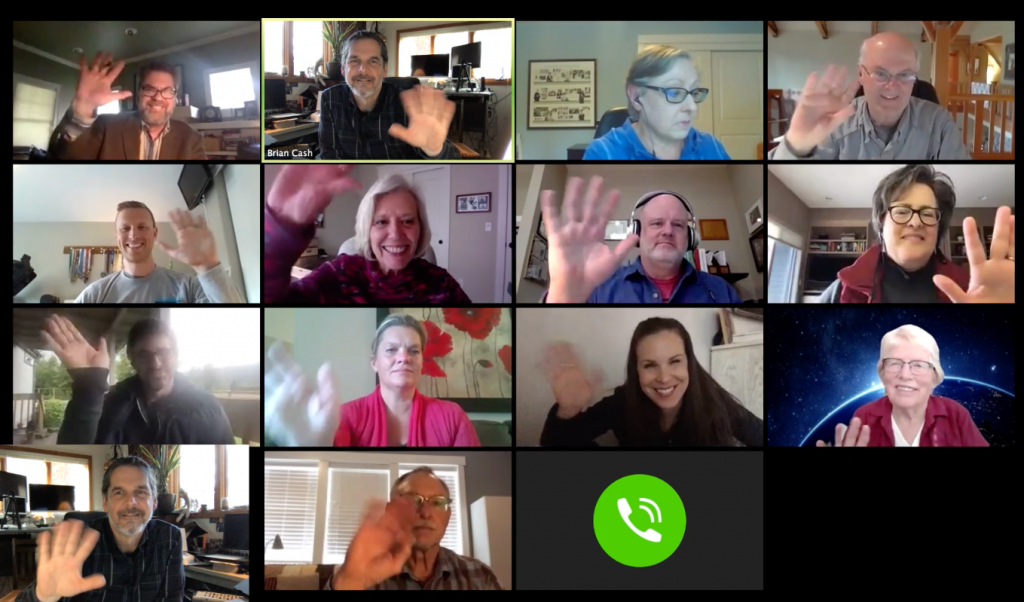Oct 30th, The Joy of Giving, with Rev. Kally Elliott
A Part of the Series:
Rev. Kally Elliott
Other Articles in:
Oct 30th: The Joy of Giving, with Rev. Kally Elliott.
In his presentation, An Introduction to Joy, roger Bell talks about the time he was invited to join the Dalai Lama and Bishop Tutu onstage. The Dalai Lama and Bishop Tutu, both Nobel Peace Prize winners. Bell he was standing there, and Bishop Tutu entered from one side of the stage while the Dalai Lama entered from the other. As they met in the middle, instead of shaking hands or using some other dignified method of greeting one another, the Dalai Lama and Bishop Tutu began tickling each other. Bell laughed and said, and then they made this noise that I will not make in public.
He continued, I sat there wondering, what is the protocol in this sort of situation? I mean, do I join in the tickling? Do I group hug? What do I do? So he did what any of us would have done.
He stepped back, got his phone out of his pocket, and took a picture.
When they finally all sat down and began talking, the Dalai Lama looks Bishop Tutu up and down and asks, have you gained weight? Back and forth, they joked, bishop Tutu commenting on how he felt like Michael Jackson with his microphone headset on. And they laughed and laughed and laughed. I can confirm I watched the video and I, too found myself caught up in their joy. Robbell says he was shocked.
He thought they would come out on stage and maybe, you know, light a candle and pray for peace, all the while carrying the heavy weight of the world on their shoulders. Instead, these two, who had seen the very worst that human beings can do to each other, who had faced apartheid and exile, were all over the peace, joking and tickling and poking fun at each other. There was this lightness about them. It wasn’t the naive lightness that comes from indifference or innocence. It was the lightness that comes from having walked through the darkest the world can get and come out on the other side, from having witnessed the deepest hunger of the world while meeting that hunger with compassion.
It’s a lightness that can also be described as deep gladness or joy. Father Gregory Boyle, a Jesuit priest, tells of when he used to ride his bike through this Los Angeles streets late at night, brokering truces between gang members, stepping between gunfights to stop them. When someone was shot and rushed to the hospital, father Boyle was at their side. When one would die, he’d offer the mass, often grieving alongside the deceased family and friends. After a while, he began to see that what he was doing wasn’t working.
It was only treating the symptoms. Boyle knew he had to treat the underlying cause of gang violence a lack of worth and knowing one’s own belovedness. So Father Gregory Boyle began Homeboy Industries, a gang rehabilitation and reentry program, a community of tenderness focused on belonging. Boyle says you want to go where the joy is, and the only thing that gets you there is loving. Period.
End of story. Nothing else will get you to joy from the place of unshakable goodness within you, you recognize the unshakable goodness in the other. You go where love has not yet arrived, and you love what you find there. That’s where the joy is.
Science actually proves this statement. Using brain imaging tools, scientists can see what parts of our brain light up or are affected when we look at pictures of people suffering. One area that lights up in response to suffering is the amygdala, the brain’s threat detection system or stress response. It’s the part that detects if the suffering you are seeing is coming for you. Other parts of our brain associated with empathy also light up when we see suffering.
It’s like our brain sets off an alarm. I see your pain. I understand it. I can even sort of feel it. As this is happening.
The area that receives rewards or experiences pleasure also begins lighting up. During this moment of empathy, we are given a bit of reward in the form of oxytocin and dopamine to begin the calming, the stress response, the heart rate, and calm all of that down and start priming us to approach the person who is suffering rather than running away and fight or flight. Dr. Amy Prasick of the Joy Lab podcast says compassion is sort of whispering at this point, but it is about to shout. This happens when an area of the midbrain that prompts nurturing and caregiving behaviors, an area full of oxytocin receptors.
Oxytocin is the love hormone. When this area lights up, the science is still emerging and we still don’t understand a lot about the brain. But it would seem that when we see or hear suffering, we are wired to detect it and then to empathize with it and then are prompted to act with compassion. And when we do, even if it is just a compassionate thought, we are rewarded. We are moved out of fight or flight and are eased into a rest and digest process, and we get a flood of reward and pleasure chemicals.
This experience is called the helper’s high for good reason. It feels really good. That is where the joy is. UC Berkeley researcher Dr. Keltner has shown another example of how our bodies are wired for compassion through part of our autonomic nervous system called the vagus nerve.
The vagus nerve is that nerve that starts at the top of your spinal cord and travels through the muscles in your neck. It then drops down and helps to coordinate the interaction between your heart rate and your breathing so that when you take a deep breath, your heart rate calms down. The vagus nerve then goes into the spleen and the liver, where it controls a lot of the digestive processes. Keltner writes in our lab, we show participants photos of suffering and distress, and we find that these images activate the vagus nerve. We’ve also found that if somebody tells you about a sad experience of, say, their grandparent dying, your vagus nerve fires.
If they tell you an inspiring story, their vagus nerve fires. The more you feel compassion, the stronger the vagus nerve response. In fact, those with strong vagal nerve responses tend to have more positive emotion on a daily basis stronger relationships with peers, better social support networks. Fifth graders who have a stronger vagal profile are the kids who intervene when a kid is being bullied. In the scripture I read earlier, jesus went about all the cities and villages, and when he saw the crowds of people, he had compassion on them because they were harassed and helpless, like sheep without a shepherd.
This translation that I read from says Jesus had compassion. But other and possibly better translations say Jesus was moved with compassion. In the Greek, compassion is a strong word about a strong response. It literally means to be moved in your bowels, to feel it in the pit of your stomach. There is nothing subtle or uncertain about it.
In the Greek, compassion means a visceral, gutwrenching emotional response that is so strong that we are physically moved to action, suggesting that when we see human need, we respond physically, emotionally, and decisively. So this may be another way of saying Jesus’s vagus nerve was being activated. His heart rate was accelerating, his stomach was churning, his bowels were moving. He was fully human. He saw the crowds and was moved by compassion.
And so, as the gospel stories reiterate, jesus cured every disease, and he proclaimed the good news of the kingdom, which sounds really kind of churchy and weird, but to proclaim the good news of the kingdom is another way of saying jesus went to where love had not yet arrived and loved what he found there. The crowds were harassed and helpless. Love had not yet arrived. The crowds were like sheep without a shepherd. Love had not yet arrived.
Jesus is moved with compassion and loves what he finds there. And then in the next sentence, Jesus turns to his disciples and says, the harvest is plentiful, but the laborers are few. Therefore ask the Lord of the harvest to send out laborers into his harvest. We’ve been spending time with this quote from Frederick Beekner the place where God calls you to is the place where your deep gladness meets the world’s deep hunger. I think I first heard this quote when I was in college, and it sent me into a deep dive of introspection.
I was flirting with the idea of going into ministry, but wasn’t quite sure it was for me. Speaking with a mentor who was a pastor, she told me the best part of ministry was being invited into people’s lives at their most vulnerable and joyful moments. I felt a twinge in my stomach and a flutter in my heart that that would bring me deep gladness.
But sometimes it is really difficult to know where our deep gladness and the world’s deep need intersect. And what I hear in this scripture is an invitation to ask God help me to pay attention to the pit in my stomach, to the speed of my heart rate, to the raggedness of my breath, to the people and the places where love has not yet arrived, and then send me to love what and who I find there.
So I’m currently in a doctoral program with George Fox University and Portland Seminary. At the end of this program, I will hopefully have created a way to meet a deep hunger in the world. It’s a three year process. So as I was discerning my work to do, I thought, well, I better come up with something that will keep my interest. For a long time it felt like I was bulldozing my way into and through the project as a means to an end.
But then I remembered Beekner’s words where your deep gladness meets the world’s deep hunger. My deep gladness, my joy. I began to pray, God show me. And I knew, I knew because I have felt that pit in my stomach. I have felt my heart rate accelerate quicker than my breathing could match.
And I’ve been met with joy. When does that happen for you? If you don’t know, the invitation is there. In scripture it says ask the Lord of the harvest, ask God to show you, but then, then be ready. Jesus doesn’t waste any time in the next breath he summons his disciples, giving them authority over unclean spirits to cast them out and to cure every disease and every sickness.
And he sends them out. It’s kind of like that saying, you know, be careful what you pray for because you will be sent. And he is clear this won’t be easy for you. In fact, if you keep reading through Matthew ten, he says to his disciples, hey, I’m sending you out like sheep into the midst of wolves. And he lists a slew of awful things that can and will happen when you are sent out to meet the world’s deep hunger.
But in doing so, he assures, he promises you will also find your real, true, abundant lifegiving joy. He says those who find their life will lose it, and those who lose their life for my sake will find it. I’m seeing glimpses of this in some of the work I have been begun doing. Last year I joined the board of Nami, Central Oregon. Nami stands for the National Alliance For Mental Illness.
In this last year, I’ve been asked to tell my family’s story several times to different community organizations. Now look, I don’t love telling our story. I still get shaky and nervous and worried that my family will be looked down upon shamed or stigmatized. But each time I tell our story, my prayer is that someone will hear that they are not alone and that there is hope. And most of the time most of the time, someone comes up after and says, thank you for sharing, that I needed to know I wasn’t alone.
And I feel joy. I’m not sharing my family’s story about mental illness here because this sermon is about more than our story. But if you feel like it might be helpful to you, please reach out to me and I’m happy to share our story with you and to walk with you. We humans, we seem to be wired for compassion, forgiving of ourselves, to others. We seem to be created to go where love has not yet arrived, to love what we find there, and to be flooded with joy as we do.
Father Gregory Boyle shares about this woman, Roman sita. She was a woman who died when she was 102, but who was part of his parish in Los Angeles. He says she was a tiny thing, full of energy, always wearing her running shoes. I’d ask her to do the mass reading and she would be delighted to do it. She’d run up to the podium and before she’d read, she’d turn around and she’d wave to the tabernacle, and then she would do the same.
When she was done reading. She didn’t have one tooth in her head, so it was really hard to make out what she was saying. You had to listen to understand her, but she was always game to do the reading. The legend was the reason she didn’t have any teeth in her mouth was because at some point in her 90s, roman Sita was jogging through the park when she saw a young mother wrangling her several children, trying to keep them in order, like herding cats. This mother did not have any teeth, so Roman Sita walked up to her and pulled out her entire set of dentures and said, here, clean these up and they will work just fine for you, because you need teeth more than I do.
You go where love has not yet arrived, and you love what you find there. And that that is where the joy is. Amen.



